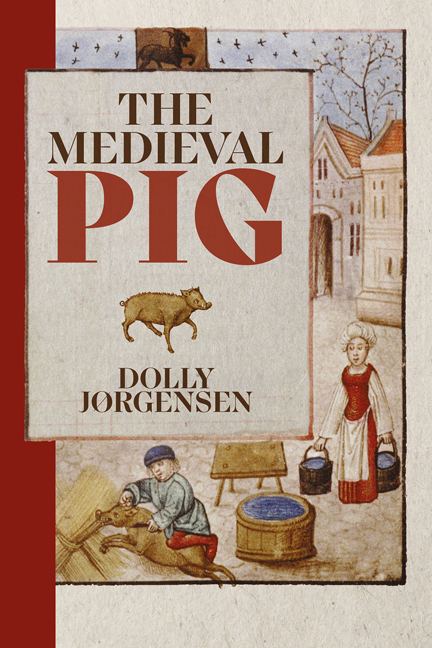6 - The Pig’s Place
Published online by Cambridge University Press: 11 May 2024
Summary
The pig was everywhere in medieval Europe. It was commonplace. It was in the countryside, in the city, on the plate, and in the mind. One would not have to look far to see a pig. They might be eating under an oak tree or out on a grassy knoll. They might be walking in the street with the swineherd close behind at their heels. They might be dismembered, for sale in the butcher shop, a potentially delicious meal for dinner. They might be on the signs hanging from the house or under the choir stalls in the cathedral, dancing, playing the bagpipes, or suckling young pigs or people. Pigs were in all these places. But what was the pig's place? What role did pigs really have in medieval society?
Perhaps the comparison of pigs with prostitutes made by the York civic ordinances is the place to start. Like medieval prostitutes, the pig was both shunned and accepted; understood as necessary while not necessarily being understood. The pig's biological qualities – its eating habits, growth rate, and fecundity – were what made it desirable. But these same qualities also transgressed social norms, making the pig a target of moral condemnation. A paradox pervaded every place the pig went.
Pigs were visible in medieval society, much more so than in our own. Highly concentrated intensive confinement systems for swine are the norm in modern industrial production. Their bodies are disciplined and controlled far from sight of the average consumer. Rather than being tucked away out of sight in mass piggeries, medieval pigs were co-inhabitants of rural and urban settlements. Pigs and people lived side by side. Medieval pigs’ bodies were also disciplined and controlled, but this happened largely within view of the people who would later consume their meat. Large numbers of people had a pig living in a sty on their property. Owners fed their pigs, cleaned up dung, and drove them to the market. Swineherds led them to pasture, knocked down acorns, and kept a watchful eye over them. Butchers bled them, cut them up, and emptied their intestines. Cooks prepared the meat in pasties and stews and fried the bacon and lard. The medieval human–pig relationship was physical and visceral.
The relationship was also mental and emotional.
- Type
- Chapter
- Information
- The Medieval Pig , pp. 76 - 78Publisher: Boydell & BrewerPrint publication year: 2024



